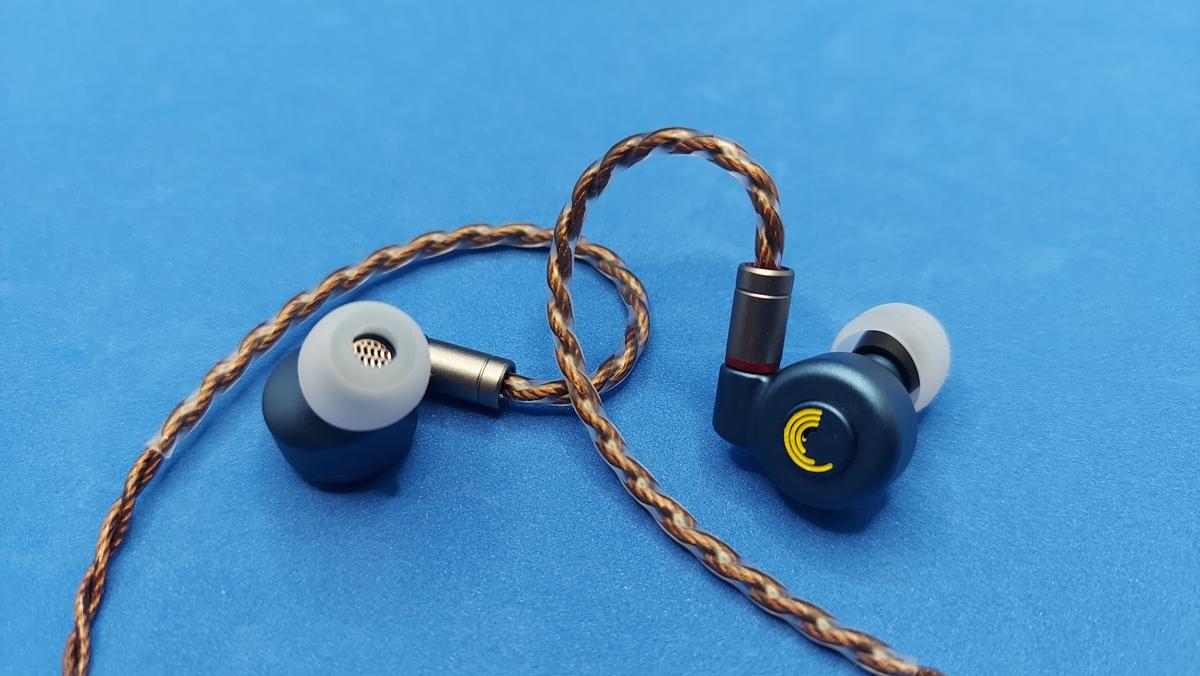A tuning adjustment away from realizing their potential.
First Impressions
I have experience with various LETSHUOER IEMs (in-ear monitors) across their price and complexity range, up to and including the outstanding EJ07M. In addition, I have the entry-level tiny bullet-style Singer and the critically acclaimed planar magnetic S12. Headphonesty teammates have reviewed the S12 Pro and Z12 editions.
The D13 occupies LETSHUOER’s entry level. They are equivalent in price to the Singer and just below the S12 and their cousins. What immediately grabs my attention is the D13’s new custom 13mm dynamic driver, with a DLC (diamond-like carbon) diaphragm and an array of high-performing N52 neodymium magnets.
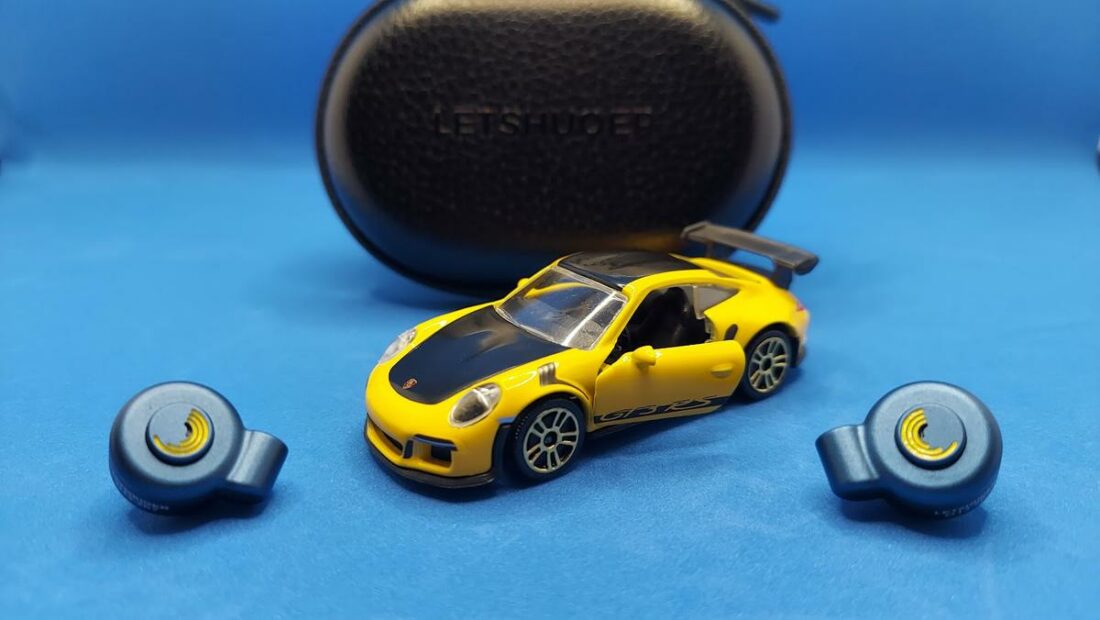
Hold our horses! One of my favorite IEMs has almost the same driver configuration, does it not? Why, yes, Sherlock, they do! The FiiO FD5 employs a 12mm beryllium-coated DLC dynamic driver with N52 magnets. Given my positive past impression of LETSHOUER quality, I have high hopes, even for a lower-level IEM in their lineup.
- Well-built, high-quality aluminum alloy shells
- Excellent design, fit, and finish
- Compact form factor is comfortable in long listening sessions
- Nearly perfect ergonomic pairing of cable and chassis
- The tuning nozzles make a difference, allowing for flexibility without tuning switches
- Tone, timbre, texture, and technicalities are above average
- High-quality included accessories, including the tips, cable, and travel case
- Intense pinna gain spike, especially with the gold nozzle filter, accelerates fatigue
- Not the best choice for music with high dynamic range
- Can be fatiguing at higher volumes
- Currently in a super-competitive price bracket between USD$50 – $100
- The optimal combination will be found in a slight re-tune somewhere between the silver and gold nozzles
What I find most impressive about LETSHUOER is that they keep taking risks and experimenting with IEMs that are distinct from one another. Let’s see if this D13 experiment passes from hypothesis to theory to market success.
Company Overview
LETSHUOER, previously known as Shuoer Acoustics, was founded in Dongguan, Guangdong, in August 2016 by self-proclaimed IEM “geekers” and audiophiles with an average of 16 years of experience.
Technical Specifications
- Drivers: Custom 13mm dynamic driver with a DLC (diamond-like carbon) diaphragm and an array of high-performing N52 neodymium magnets
- Impedance: 16 Ohms
- Sensitivity: 105dB/mW ± 1dB
- Frequency Response Range: 20Hz – 20kHz
- THD: 0.16% ± 0.1%
- Noise Isolation: Passive
- Style: In-ear, with ear hook cable
- Color: Blue body with yellow accents, or black body with red accents
- Body Material Construction: CNC-machined aluminum, with swappable nozzle filters
- Weight: 5.6g (each)
- Connector: 2-pin 0.78mm
- Plug Type: Choice of 3.5mm or 4.4mm gold-plated straight plug
- Cable Length and Type: 1.2m (4 ft), 4-core, 0.05mm * 216-strand high-purity monocrystalline copper, interchangeable
Packaging
The medium-sized box is clean, well-constructed, and well-presented. Inside the box, a foam block with precise cutouts for the D13 keeps them safe. Below the foam are the accompanying documents, with the ear tips, alternate nozzles, and cable inside the black leather case. Thankfully, there is not much waste, nor is there much plastic.
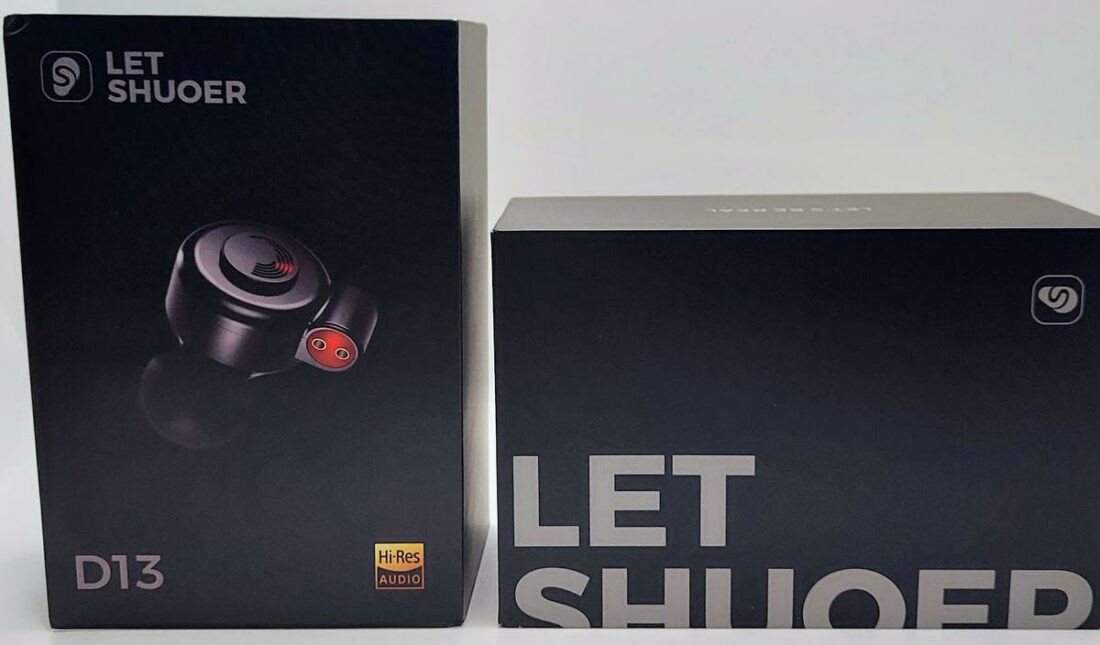
In the box
- D13 IEMs
- 1.2m (4 ft), 4-core, 0.05mm x 216-strand high-purity monocrystalline copper, interchangeable
- 6 pairs of silicone ear tips in S, M, and L: 3 white and 3 black (bass focussed)
- 2x sets of tuning filters (standard or attenuated treble nozzle filters)
- Product certificate and warranty card
- Leather carrying/protective case
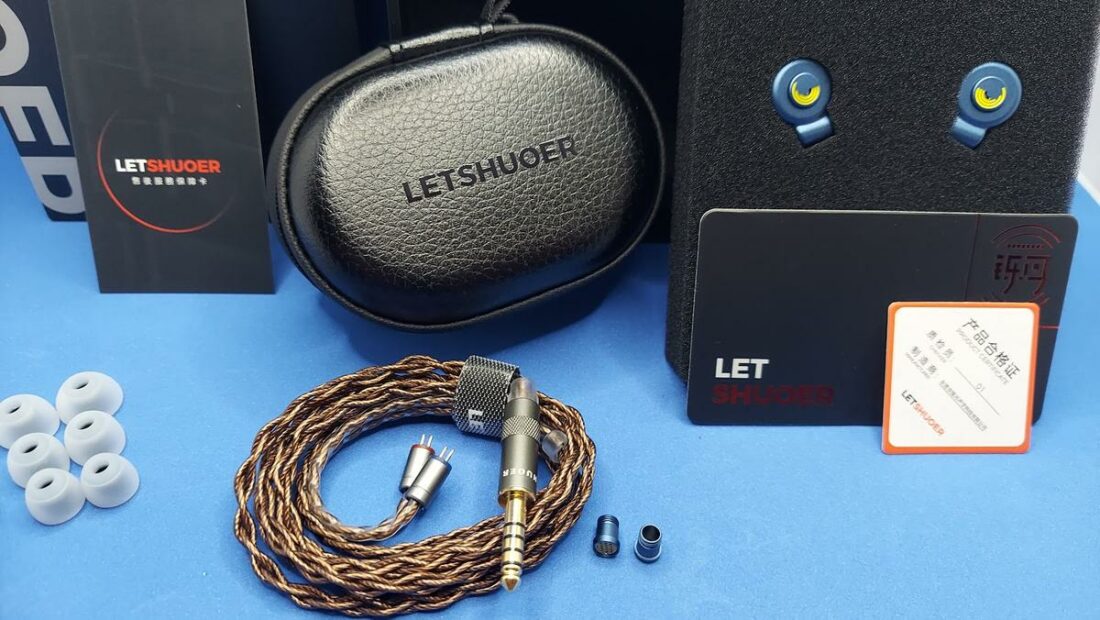
Cable
Included is a high-purity 1.25m, 4-core, 0.05mm * 216-strand monocrystalline copper cable featuring a fully-braided design. It has standard 0.78mm connectors and the option of 3.5mm single-ended or 4.4mm balanced straight gold-plated plug terminations.
This cable is one of the best I’ve seen included with IEMs in this price bracket. Pliable, light yet robust, beautiful, and largely tangle-free. The copper-colored braided cable is even more attractive in person than in the pictures.
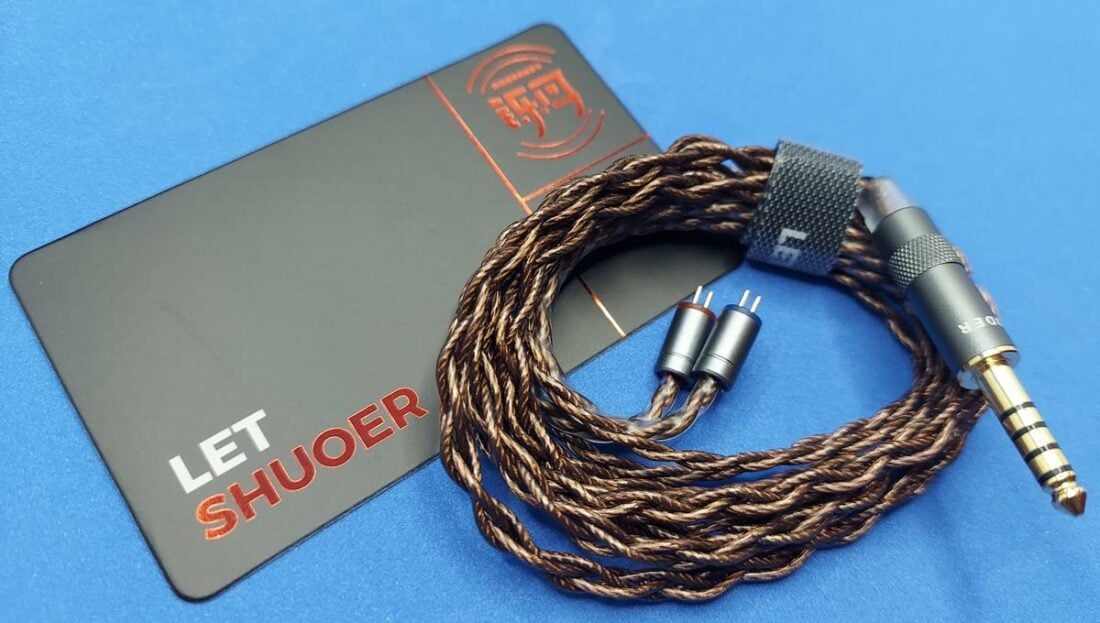
The ends are color-coded, making identification of the left and right sides simple. All connections are metal and robust, especially the main 3.5/4.4mm plug. The only apparent plastic pieces are the chin slider and the clear sheathing of the ear hooks.
The ear hooks are virtually perfect for me. They retain their shape around the ear without exerting pressure, secure the D13 well, and remain comfortable for long listening sessions.
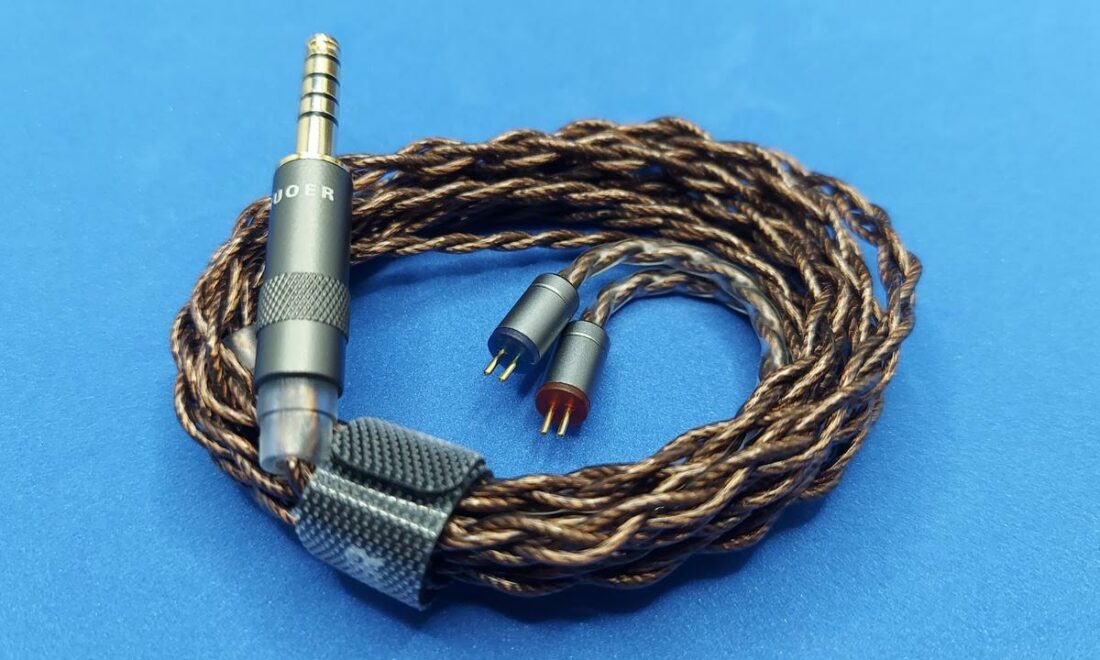
There are no microphonics to complain about (which I most certainly would if it was an issue!). The sliding cinch takes effort to slide up and down the cables that lead to each IEM, meaning it will stay where you put it.
Build & Design
The D13 are very light. Despite being only 5.6g each, they feel solid and premium in hand. The fit and finish are excellent. The interchangeable nozzles screw in and out easily, smoothly, and with high precision.
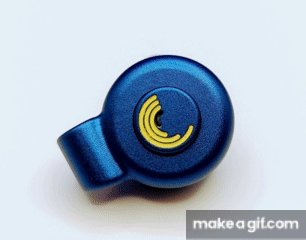
The D13’s compact CNC-milled aluminum alloy shells are finished in either blue or black. Four vent holes (one front, three rear) ensure wearing comfort, mitigate driver flex, and reduce in-ear pressure while listening to music.
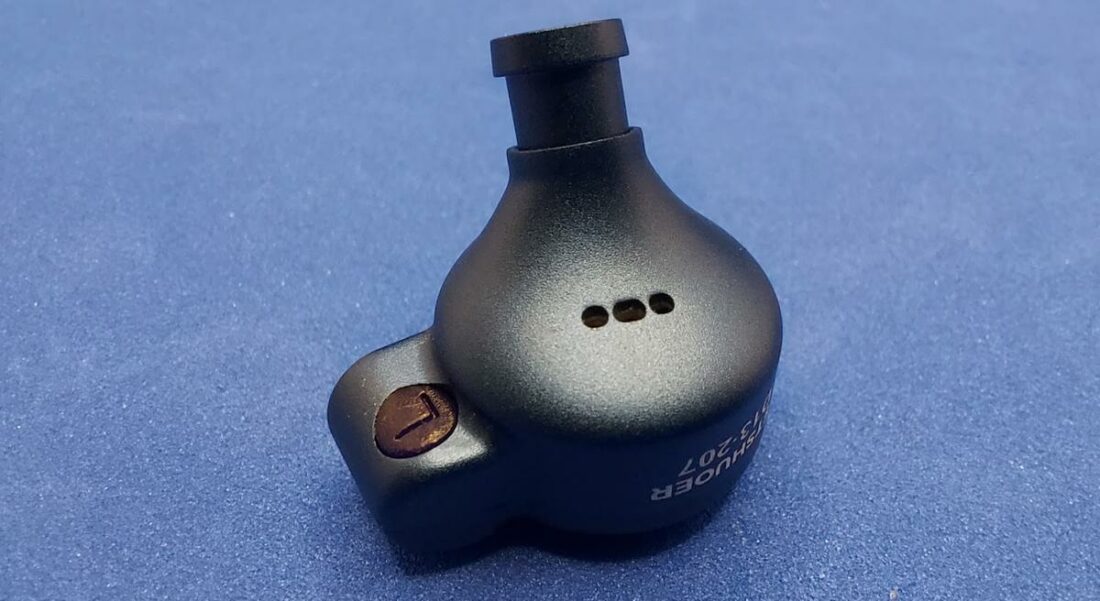
Despite multiple parts, all pieces fit together seamlessly. The dual-pin receptacle is separated from the main chassis. LETSHUOER’s choice minimizes the space in the separate acoustic main chamber, effectively isolating the interference of external factors and making for a small and comfortable shell inside the ear.
Comfort
In a word, superb! While the shape doesn’t inspire confidence that they are ergonomic, they are small and make no unpleasant contact with my ears.
All surfaces are smooth, and the IEMs tuck into place nicely. The nozzle length and the small body result in a secure, streamlined fit. The angle should fit most ears well.
Combined with the excellent cable, decent ear tips, and forget-that-I’m-here ear hooks, the D13 do not cause wearing fatigue.
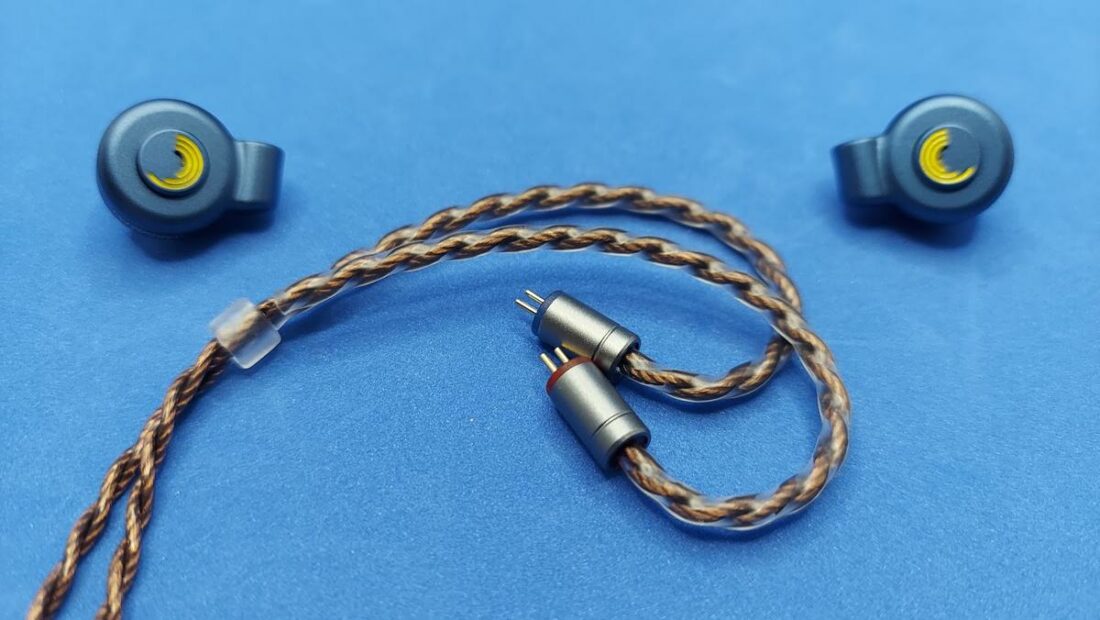
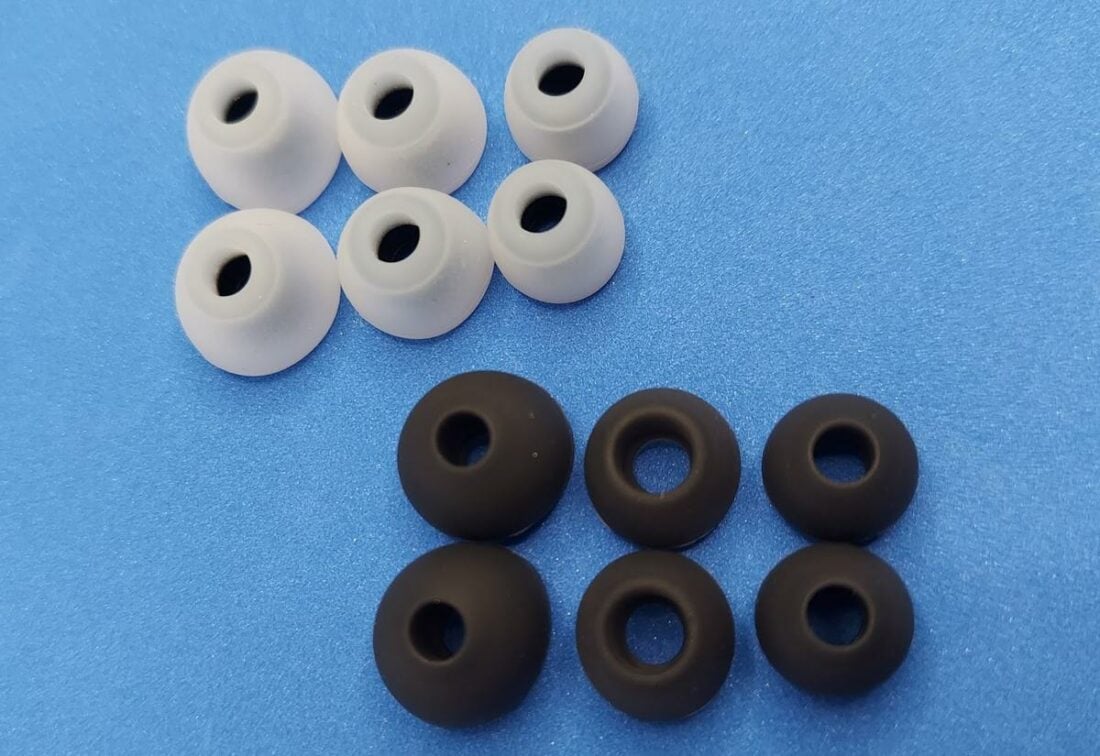
Internals
While the chassis is tiny, the driver diameter is quite large and is intended to provide sub-bass extension and bass quantity without sacrificing clarity in the mids. With the driver in a separate acoustic chamber, LETSHUOER asserts that driver uniformity increases and lowers unit variance.
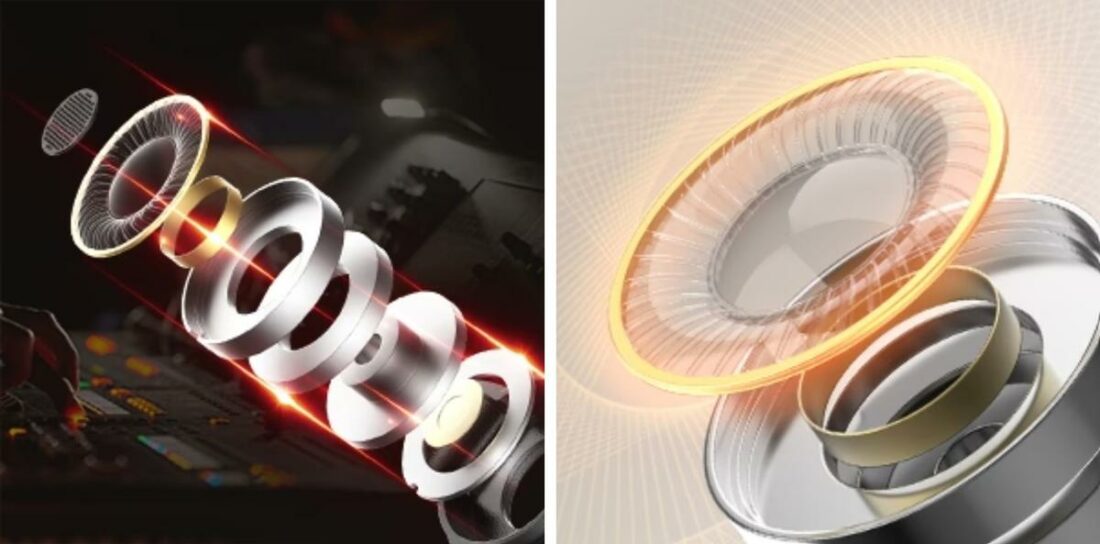
A custom 13mm dynamic driver utilizing a diamond-like carbon (DLC) diaphragm was designed for the D13 (hence the IEM’s name). LETSHUOER’s primary goal is to increase dynamics and driveability.
The D13 come with swappable filters to tune the sound. The standard filter (gold nozzle) has one side of damping material, delivering a more lively presentation. The attenuated filter (silver nozzle) has two sides of damping material, providing more prominent bass under the same sound pressure level (SPL).
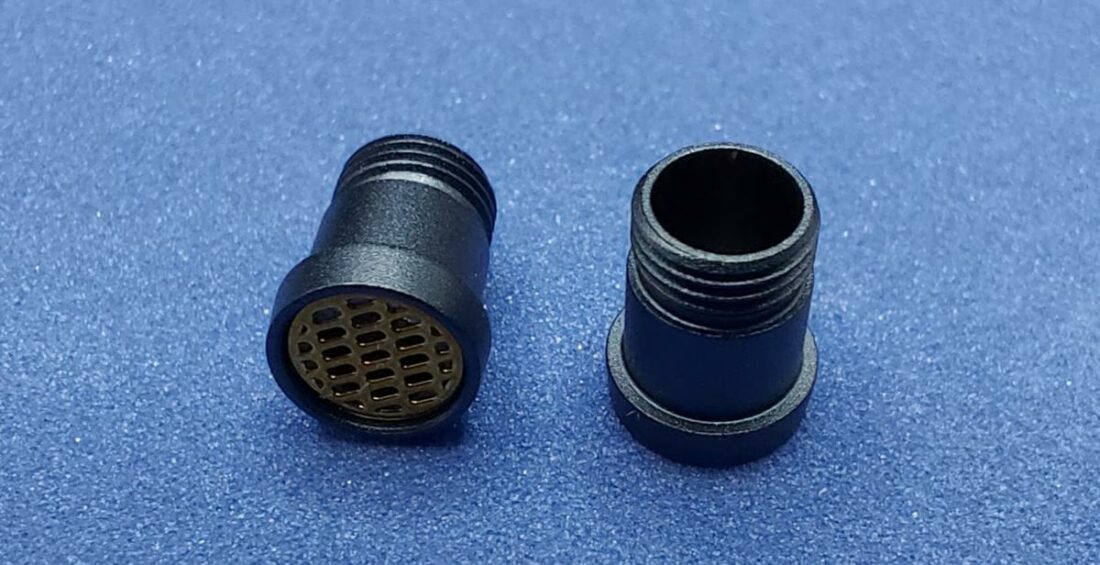
LETSHUOER D13 Sound
You can likely source them through high-quality streaming services. Let me know if you find some new favorites, and please share yours with us at Headphonesty!
For evaluation, I listen to a great variety of music through numerous sources, including:
- Sony DVP-S7000 CD Player
- LG V20 & LG V40 phones (both have Quad DAC and headphone jacks)
- Samsung A71
- Lenovo IdeaPad 3
- Khadas Tone2 Pro
- S.M.S.L SP200 Headphone Amplifier
- TempoTec Sonata E44
With a high sensitivity of 105db and a low impedance of 16 ohms, these IEMs are easy to drive with virtually any source. Passive sound isolation is very good with proper-fitting ear tips.
This section has been challenging to write. Let me explain…
Overall, the sound performance of the D13 is good. It is sometimes excellent and sometimes cringy. The stock tuning seems well-balanced and complete until some surprises show up.
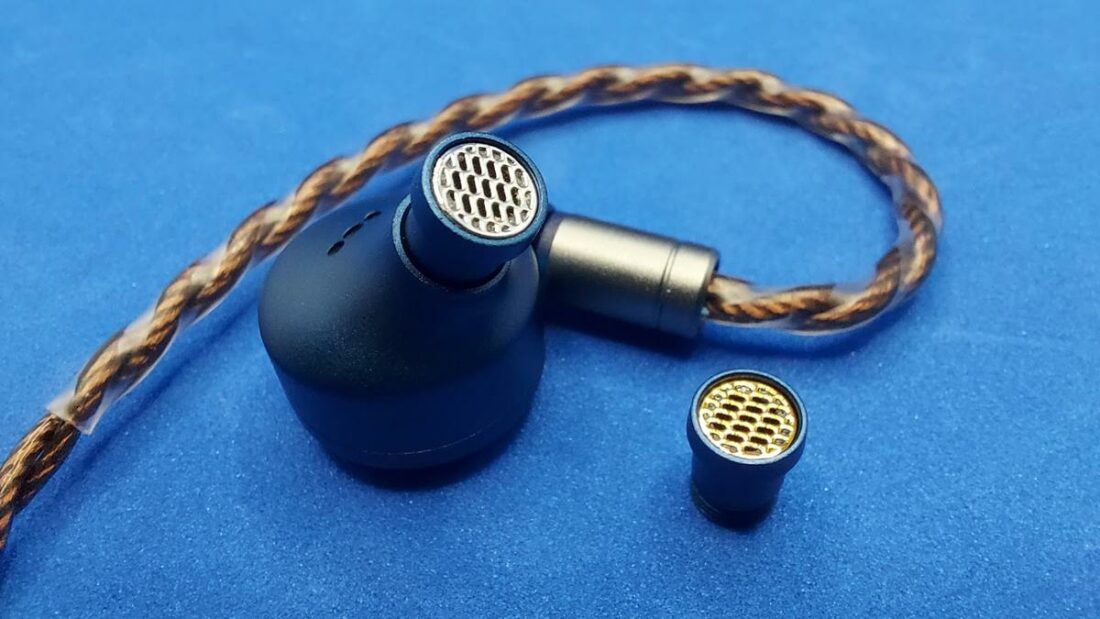
I’m particularly conflicted with the nozzles/filters. The silver nozzle lessens the above unpleasantries at the cost of detail, clarity, and wow factor that the gold nozzle delivers. I cannot listen to the gold nozzle for long at moderate or higher volumes, although I prefer it, as the D13’s strengths come to life.
The D13 sounds clear and detailed at lower volumes. Turning up the volume will also turn up pinna gain pain.
Played at higher volumes, sibilance shines through, and shoutiness becomes an issue. This results in the mix sounding SPL imbalanced, meaning that certain parts of musical passages sound unusually louder than others.
Let’s begin our journey with American musical storyteller David Arkenstone’s Overture from his album In the Wake of the Wind. The flowing instrumental with powerful dynamics features a flute/piccolo crescendo after 1:40 and twice in the final 15 seconds of the track. These are jarringly loud and sharp through the D13, even more with the gold nozzle.
I triple-checked the source recording and my equipment to see if the volume had glitched upward at ill-timed moments. This phenomenon does not replicate on more neutral IEMs.
The upper midrange/lower treble can be too sharp, irritating, and sometimes painful in a specific part of the frequency range.
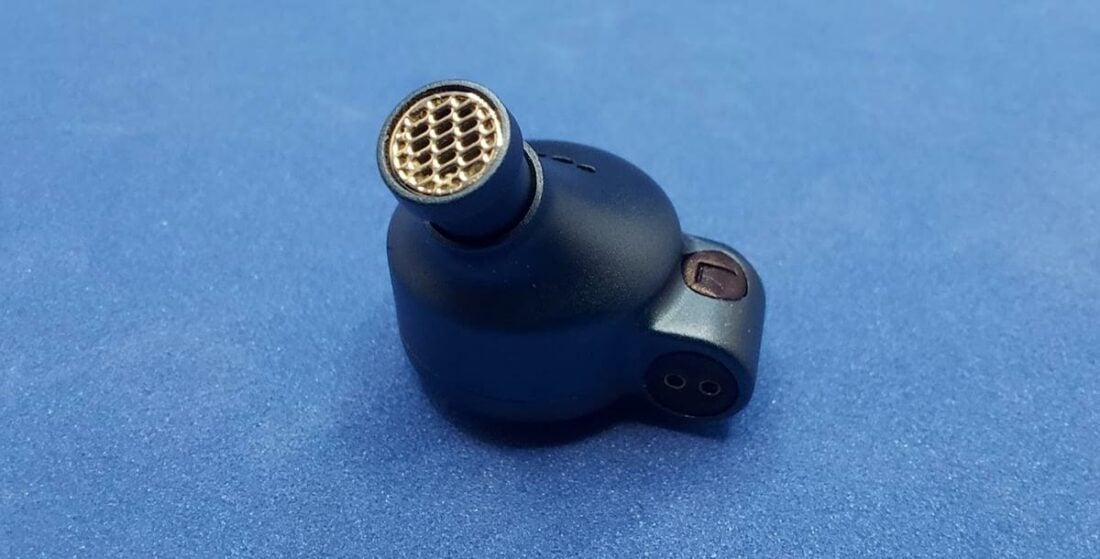
This is tolerable at low volumes, making the sound very detailed and clear. Raise the volume a hair, and my hair stands up, accompanied by a cringe.
After listening for some time, I closely inspected the frequency response graph for an answer. The glare phenomenon is an artifact of what is happening in the pinna gain region, specifically between 2-2500kHz.
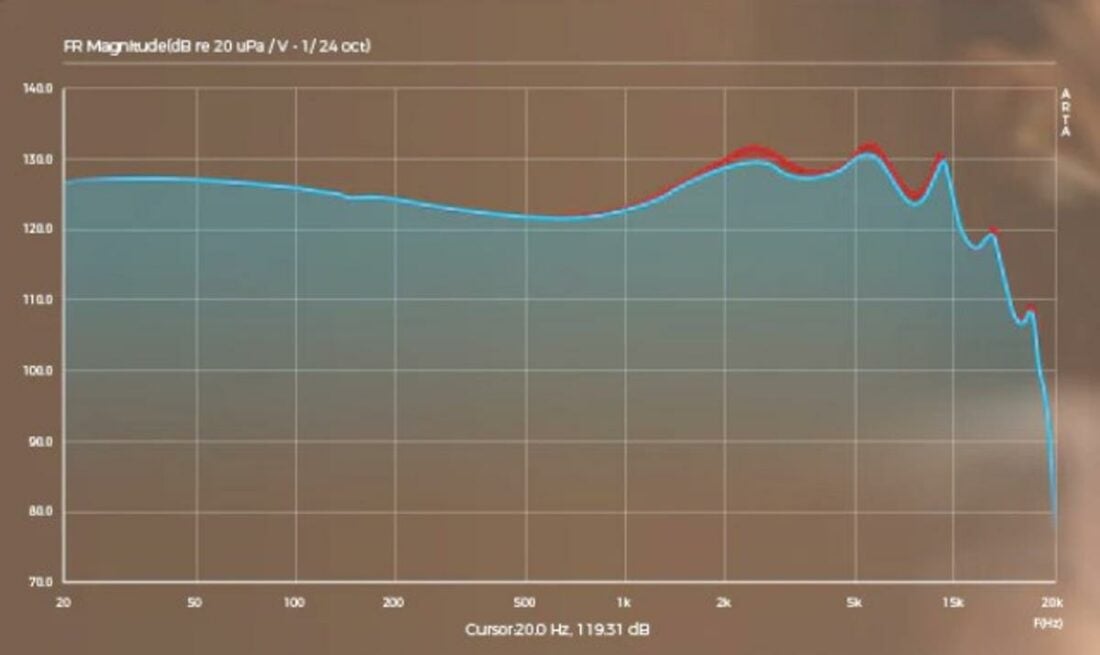
This region can be a harsh edge to balance. The tuning decision that LETSHUOER made in the rise from approximately 700kHz to 2500kHz is confusing, as I believe it translates piercingly to what I’m hearing. Did anyone on the product team notice this?
This specific peak is unfortunate; an interesting choice if it was, in fact, a choice rather than a gremlin that could not be worked out before release. While it may be fixable with EQ, it’s too much right out of the box with some music.
American guitarist Michael Gulezian’s acoustic recordings are sensual if you will. On his album Thunder Heaven Light, several tracks exemplify the D13 natural timbre, imaging, and detail retrieval, accompanied by full-bodied bass resonance. There are no signs of the abovementioned issues, mainly because his acoustic guitar doesn’t often range into the D13 hot zone.
Making EQ adjustments down a hair in the trouble areas can reduce the forwardness. At the same time, soundstage size and imaging specificity are reduced slightly. The other dynamics are not missed as much, given how much easier the music is to listen to after the EQ adjustment.
Bass
Bass extends fairly deeply and does a good job rendering recordings with a bit of extra boost. Rumble comes with no obvious distortion and resolves with moderate decay. This works well for music that has electronically produced bass and intimate acoustic music featuring cello and upright bass.
While exploring a profoundly lush soundscape, Ramyt Ramyt: Pacifica, Session II, the varying bass presentations are satisfying. The body of the sound fills in so nicely. The contrast between sub-bass and bass with the glare in the upper midrange/lower treble quickly fatigues, especially at volumes where I can discern the spectrum of detail in the music.
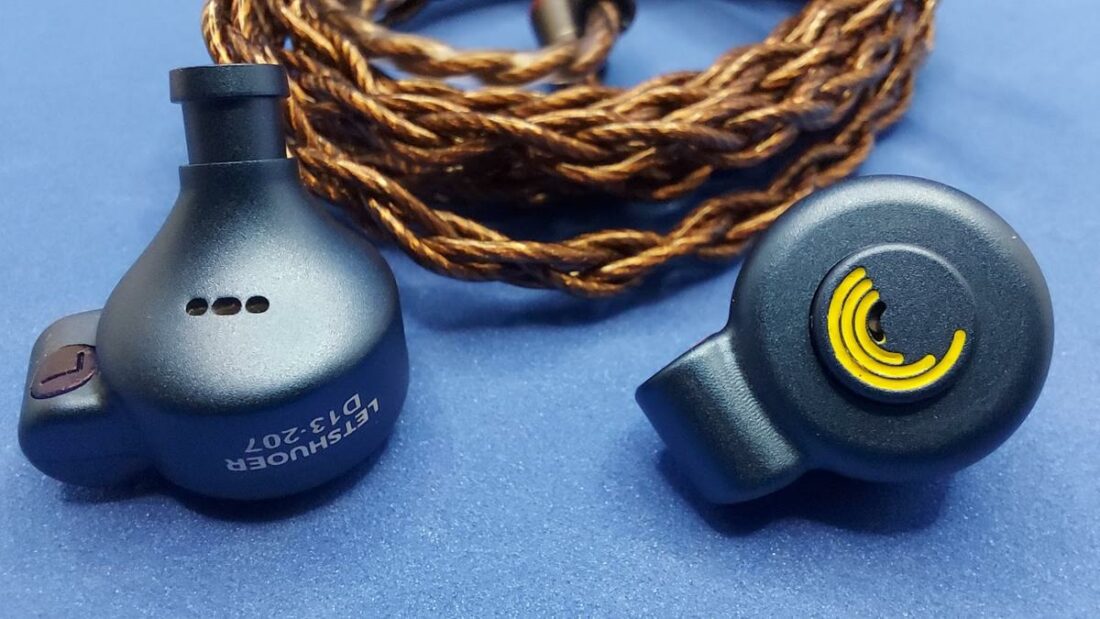
Interestingly, the glare occurs at 0:57:00 into the track when the sub-bass is fantastic. The claps and other prominent frequencies are sharp with the D13. With the silver filter, this is more tolerable, giving me the confusing impression that the tuning is more V-shaped.
Midrange
Lower midrange frequencies generally have a nice body and texture. They present appropriately without being behind the bass or muffled. The upper midrange and lower treble can be forward enough to overshadow the lower frequencies.
Next, let’s cross the pond to visit France to listen to FM LAETI’s radio edit version of Wanna Dance. The D13 sound good. The music does not wander much into the frequency danger zone. Again, there is a distinct difference between the nozzle filters. The gold is more lively and reveals more detail, while the silver is more reserved.
The D13 may sound great to you with your library. It’s also as likely that you will discover music that does not replay to your liking.
It’s a bit of a gamble, as happens when a company does not aim for “safe tuning.”
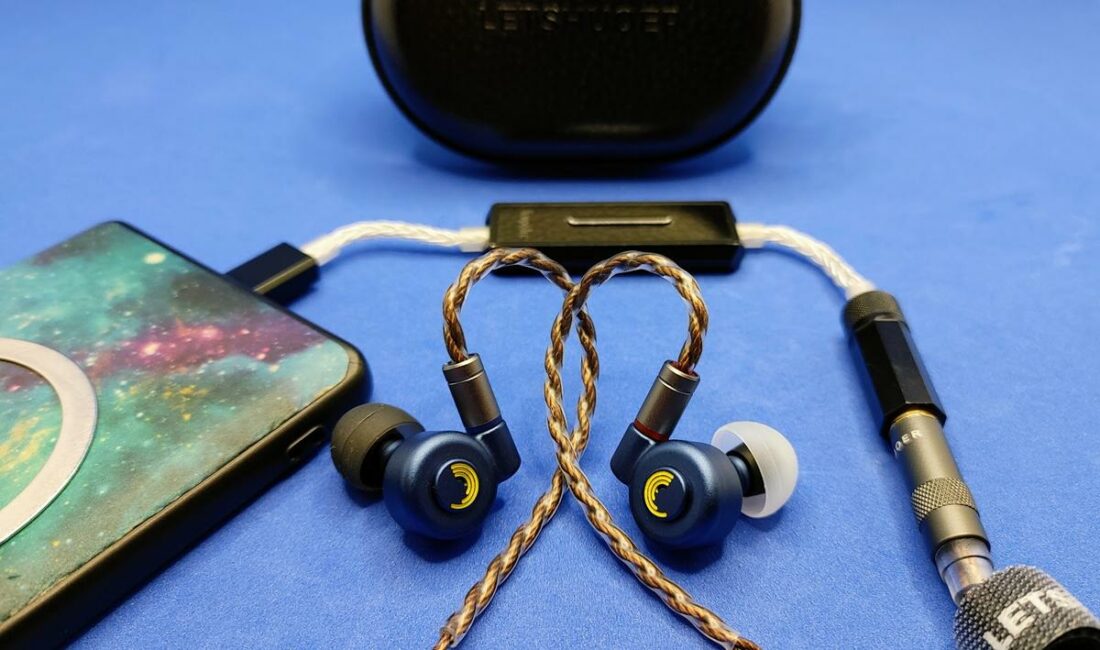
Treble
As noted throughout, treble reproduction will vary with the two nozzle filters and your source music, and possibly to a lesser extent, your gear. Overall, the treble extension is between average and above average. Despite good clarity and detail, there is no great sense of air and space.
Visiting composer Piotr Musiał in his studio in Poland, let’s listen to The City Must Survive – From the Frostpunk Original Soundtrack. Piotr is the first Polish composer to receive the prestigious G.A.N.G. Awards “Music of the Year” nomination. He was nominated in 3 different categories in a single year for his soundtrack for Frostpunk.
Overall, the D13 struggles a touch with this track’s complex layering and distortion. With the silver filter, the bass and lower midrange can sound slightly distorted and congested. The treble extension is somewhat compromised.
The gold filter presents more clean detail, though that comes at the cost of numerous and more noticeable sharp points throughout the piece.
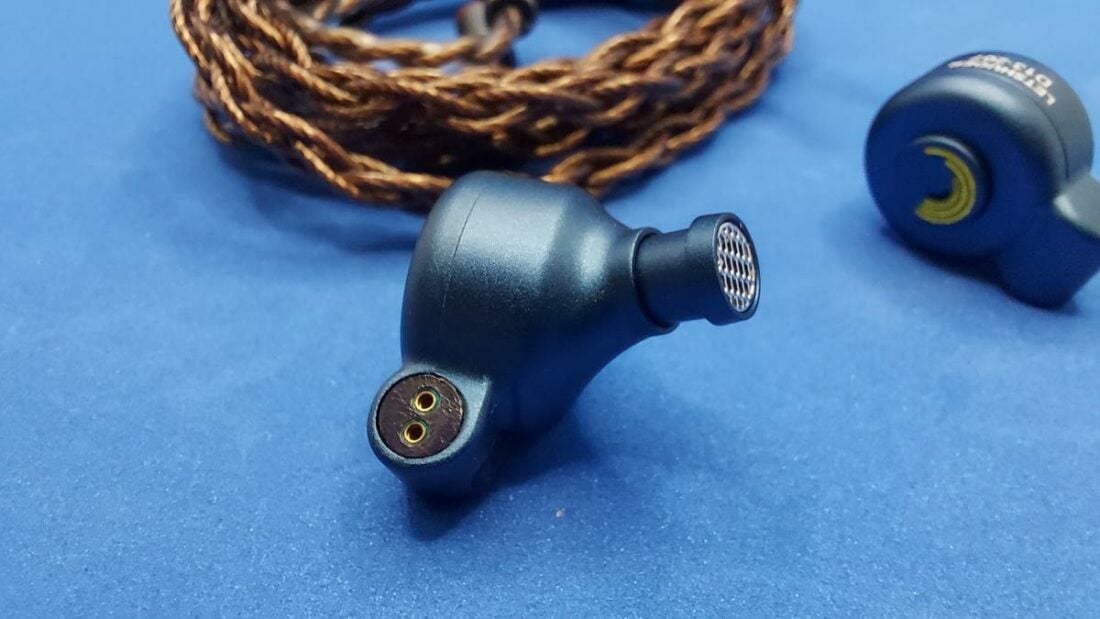
Where to Buy
Conclusion
Typically, my conclusion is much more conclusive. In the case of the D13, I am divided between two filters and a preset tuning challenge.
You will enjoy these if you like sizzle and detail without losing grunt on the low end. For others, there will be an adjustment period to build a tolerance for the frequency spikes and the sharp edges.
There is much to love here – high-quality shells and cable, compact form factor, outstanding comfort, and fun design. In my estimation, the driver is excellent, as is the driver chassis.
The D13 are hampered by their tuning, occasionally resulting in odd timbre, shoutiness, and harshness. Psychoacoustic attenuation (“brain burn-in”) helps me enjoy these, though I am still acutely aware of and sometimes bothered by the glare and treble issues.
The D13 are inconsistent and source material dependent.
If you are comfortable with and enjoy EQ, some fine adjustments can likely adapt them to your preference. As a result, the D13 will spring a few levels up. Out of the box, your sonic experience may be significantly variable depending on what you are listening to.
The D13 may or may not fit your catalog/music choices. As tuned, the D13’s tuning will be the least offensive with lower dynamic range music (low-fi, ambient, folk, country, easy listening, etc.).
If you listen at lower volumes and prefer detail, you will likely be happy with your D13 purchase, and the above critique may not be as noticeable. And if you are receptive to minor EQ adjustments, the D13 are worth their asking price.
